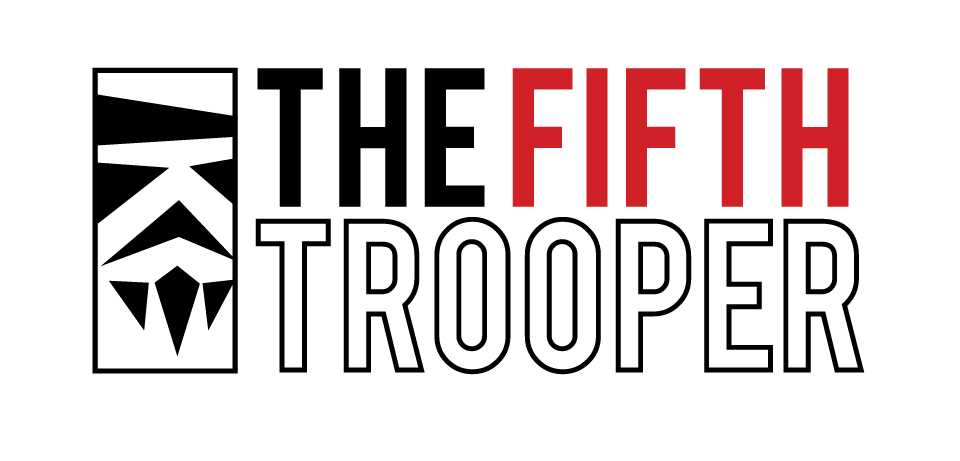In my last article I introduced the concept of swing. For those who didn’t read it, stop and do that right away. As a quick refresher for everyone else, swing is a way of quantifying a unit’s ability to flip objectives. If you spend an activation adding three allied bodies to objectives and removing 2 enemy bodies, that would be a total swing of five.
In the time since my last article, hopefully you’ve been trying to make swing happen, both as a game concept and as a phrase. However, if your opponent has mastered swing, you probably want to stop it and keep your objectives for yourself. Never fear! Today we’ll take a look at ways to create and prevent swing when it’s not your activation. I’ve dubbed this “reactive swing mitigation” to try sounding very fancy.

Defender Moves
Let’s start by considering a basic example from last article: red controls an objective 1-0, blue moves in, attacks, and shoves red off of the objective. Blue would now be 1-0 and win the objective. But what if the red defender gets a move from their expertise? If they use that move to come back to the objective, now it’s 1-1 and red will maintain control (assuming no Inquisitorial Mandate). Remember though that not all defenders with moves in their expertise are created equal. Barriss Offee is going to have an easier time getting two expertise for her reposition than Asajj, who needs four for a jump (in Form II Makashi).

If you’re the blue player, some effective ways to mitigate the move back would include: applying a pin to the defender so they can’t move back, applying expose before the attack so they don’t get expertise, or, if they only get an advance or dash, shoving them off elevated terrain. Note that in the last example red might still be able to get back up even without a jump if they can move to an ingress point. Furthermore, even if red has a jump, blue might be able to body block with the attacker such that red has no spot to jump back onto the terrain while still being in range to contest.
Additionally, the red defender in the above example can use their expertise move to go to a totally different objective, potentially flipping it. Such examples are covered in my Knowledge and Defense deep dive. Coincidentally, that ability is a fantastic example of reactive swing mitigation. Since I’ve already done the deep dive on it I won’t discuss it much here, though.
Non-Defender Moves
It’s rare, but sometimes after you attack one unit, a different enemy will get to move. Usually this would be a result of wounding the defender. Examples would be Ahsoka Tano, Jedi No More moving after Fierce Protector is triggered or Dooku moving a support unit after Brave, But Foolish is triggered. Much like defender moves, when a non-defender moves they don’t have to necessarily move to contest the objective that is newly threatened. You could potentially head off and flip a different objective instead.
In this example, blue moves in and wounds red. Primary Ahsoka triggers Fierce Protector and moves to contest the objective, keeping it from flipping. I’ve drawn it such that she isn’t in melee with blue, since we haven’t talked about attacks yet. Hey, look! Is that a transition I spot?

Reactive Attacks
Much like non-defender moves, reactive attacks are usually triggered by an ally becoming wounded. They are also often paired with a reactive move, but not always. A reactive attack can wound or shove an enemy to prevent swing. Since Mother Talzin featured in the final example of Swing Theory: Part One, let’s feature her again here in part two!
In the final example, blue moves in on the objective and wounds the red defender. In response, Talzin triggers Wrath of the Great Mother. She dashes over, but can’t get into range to contest. However, she does get her attack off. We’ll assume Talzin is in her Great Mother stance since that has great shoves (and a better ranged expertise, interesting how Great Mother synergizes with Wrath of the Great Mother, huh?). Talzin gets one success past defense dice and shoves blue out of contesting range. Now it’s 0-0 and red maintains control.

Wrap-Up
Reactive swing is much less common than the proactive swing discussed last article. However, the characters who specialize in it are usually very good at it. If primary Ahsoka, Talzin, or Dooku are on the other side of the table you need to be aware of how they will mess up your plans to flip objectives. Sometimes it may be worth going for shoves instead of wounds if it means you won’t trigger a reactive move or attack. If you are the one bringing such characters, be aware that reactive swing mitigation is how they get a lot of their value, so put them in position to foil your opponent.
If you made it through these last two articles, well done! You are now a swing expert. Now you can truly call yourself a “Swinger”. I see no issues or misunderstandings coming from using that term. Happy swinging!
